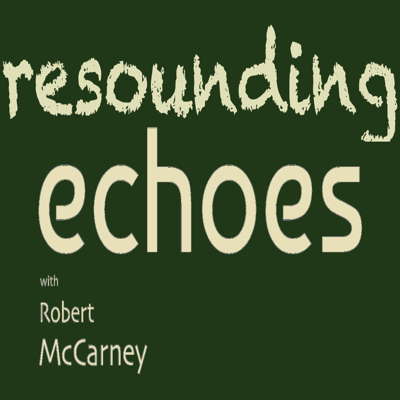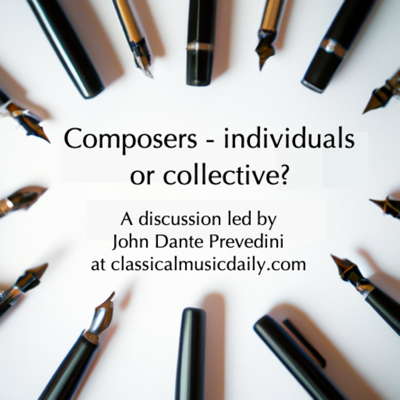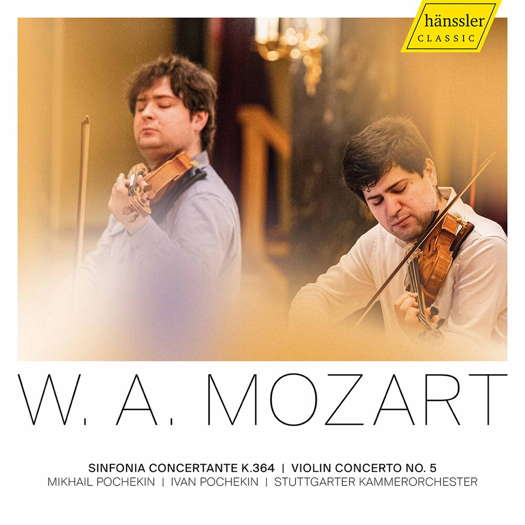 RESOUNDING ECHOES: Beginning in 2022, Robert McCarney's occasional series features little-known twentieth century classical composers.
RESOUNDING ECHOES: Beginning in 2022, Robert McCarney's occasional series features little-known twentieth century classical composers.
 DISCUSSION: John Dante Prevedini leads a discussion about Composers, individuals or collective?, including contributions from David Arditti, Halida Dinova, Robert McCarney and Jane Stanley.
DISCUSSION: John Dante Prevedini leads a discussion about Composers, individuals or collective?, including contributions from David Arditti, Halida Dinova, Robert McCarney and Jane Stanley.
- Paul Zukofsky
- Georg Benda
- Kate Moore
- Muzio Clementi
- Antony Gray
- Michelle Cann
- Paul Schoenfield
- MusicLogo computer language

Absolutely Riveting
GERALD FENECH listens to Mozart's Sinfonia Concertante and Violin Concerto No 5
'... the Pochekin duo exudes brilliance, virtuosity and an ebullient sense of occasion ...'
The designation sinfonia concertante gives a good idea of its form: a combination of symphony and concerto. The genre was popular in the late eighteenth and early nineteenth centuries, and to some extent derived from the earlier concerto grosso. Part symphony part concerto, such pieces prominently offer two, three or even four soloists who relate to one another to a greater degree than to the full orchestra. The prominence and independence of the soloists are paramount. Indeed, Mozart attempted to write several of them, but only the K 364, the most famous of all, was completed. Very little is known of the genesis or the first performances of the Sinfonia Concertante in E Flat, although the work seems to date from the summer or autumn of 1779 when Mozart was twenty-three years old. Because he composed it in Salzburg, there was little reason for him to mention it in correspondence, and the manuscript is lost.
By this time Mozart had already written five violin concertos for his own use, but this was the last scored for stringed soloists. The composer may have been inspired to write this work by pieces he had heard the previous year on travels to Mannheim and Paris, where the genre enjoyed great popularity. While in Paris, Mozart's mother died aged fifty-seven, and the deeply felt second movement may reflect that loss. Although Mozart played both the violin and viola, he much preferred the latter, and here he gives the instruments complete parity. He does something unusual as well by writing the viola part in a lower key. Mozart uses a modest-sized orchestra with only horns and oboes supplementing the strings. This creates the illusion of a more substantial ensemble, and by giving those instruments a more soloistic assignment and dividing the string sections into sub-groups, a richer texture is produced.
Listen — Mozart: Allegro maestoso (Sinfonia Concertante)
(track 4, 6:31-7:28) ℗ 2021 Hänssler Classic :
A wealth of Mozartian musical motifs is explored in the lengthy Allegro maestoso. After the searching of the C minor Andante, a buoyant Rondo finale (Presto) closes this amazing work.
Listen — Mozart: Rondo finale (Sinfonia Concertante)
(track 6, 0:00-0:56) ℗ 2021 Hänssler Classic :
Mozart's practical involvement with the violin began at an early age. Indeed, his father Leopold (1719-1787) published a treatise on the fundamentals of violin playing in the year young Wolfgang was born (1756). The boy began lessons with his father in 1762, and was soon participating in making music with Leopold's colleagues and friends. During these sessions Mozart made the acquaintance of two of Italy's foremost violin composers of the day: Giuseppe Tartini (1692-1770) and Pietro Locatelli (1695-1764). This emphasis on violin music culminated in 1775 when, in the course of nine months, Mozart composed five violin concertos for his own use, with the aim of perfecting the genre in stages. By the time he was writing the fifth Mozart had already transcended the limits of his contemporary models.
In the Concerto No 5 in A, K 219, the composer demonstrates great imagination in his experimentation with fluctuating tempos and diverse metres within single movements. Such freedom in his handling of material expresses the complete command Mozart had of both the Italian and French styles, and this when only nineteen. The first movement quickly presents us with formal peculiarities that are odd for the period. Following the tutti exposition, the violin enters with a tempo change from Allegro aperto to Adagio, completely altering the mood. When the Allegro returns, we discover that what appeared to be the first theme turns out to be an accompaniment to what is the true first theme stated in the solo violin.
Listen — Mozart: Adagio - Allegro aperto (Violin Concerto No 5)
(track 1, 1:55-2:52) ℗ 2021 Hänssler Classic :
The Adagio in E is a three-part song form of a lyrical and contemplative nature, while in the Rondo finale Mozart reminds us of his liking of French models. Still, there is a uniqueness in the movement stemming from an introduction of a simultaneous metre and tempo change, as well as a change of key to A minor. This is an episode in the alla turca style. To achieve this effect Mozart not only changes the mode to minor, but requires the cellos and basses to play coll'arco al rovescio, thereby producing a percussive sound.
Listen — Mozart: Tempo di menuetto (Violin Concerto No 5)
(track 3, 4:05-4:34) ℗ 2021 Hänssler Classic :
This is music that dazzles like the rays of the morning sun breaking through the murky clouds of a misty morning to warm our hearts with their beauty.
Listen — Mozart: Adagio (Violin Concerto No 5)
(track 2, 8:28-9:26) ℗ 2021 Hänssler Classic :
Performances are absolutely riveting; indeed, the Pochekin duo exudes brilliance, virtuosity and an ebullient sense of occasion that make of this programme an experience to cherish. Highly competitive, despite the many top-class recordings still in circulation.
Copyright © 6 January 2022
Gerald Fenech,
Gzira, Malta

CD INFORMATION - MOZART: SINFONIA CONCERTANTE; VIOLIN CONCERTO NO 5


